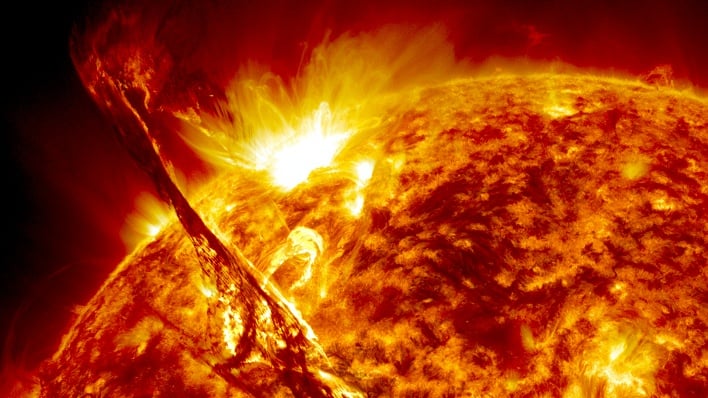NASA's Stunning Time-Lapse Video Of The Sun Packs 133 Scorching Days Into An Hour

A recent video posted by NASA chronicles solar activity from August 12 to December 22, 2022. The satellite has steadily captured images of the Sun in 4K x 4K resolution for almost 13 years. All the data collected thus far has enabled numerous new discoveries about how our closest star operates and how it influences the solar system.
SDO captures images of the Sun every twelve seconds in ten wavelengths of ultraviolet light. Each wavelength unveils different solar features and is given a unique color. Each image taken is eight times the resolution of HD video. SDO peers deep into the Sun's fiery atmosphere, seeking out dark coronal holes or bright active regions on the solar surface to massive eruptions and flares that whip out millions of miles above the surface.
The 133-day time-lapse showcases images taken at a wavelength of 17.1 nanometers, an extreme-ultraviolet wavelength that displays the Sun's outermost atmospheric layer, the corona. The video is a compilation of images taken every 108 seconds over about a four-month period.
Our Sun rotates once every 27 days. The loops extending above the bright regions are magnetic fields that have snared hot, glowing plasma, according to NASA. "These bright regions are also the source of solar flares, which appear as bright flashes as magnetic fields snap together in a process called magnetic reconnection."
Some of the dark images in the video are caused by the Earth or the Moon eclipsing SDO as they pass between the satellite and our bright star in the sky. NASA says that other blackouts were caused by instrumentation being down or data errors. Images of where the Sun is off-center were observed when the spacecraft was calibrating its instruments.
Every day SDO captures an amazing 70,000 images, which equates to approximately 1.5 terabytes of data. A 2017 research paper in Nature described it as "...one of the richest and biggest repositories of solar image data available to mankind."
NASA also has the Parker Solar Probe that it launched in 2018, which became the closest ever human-made object to the Sun. ESA launched its Solar Orbiter in 2020, and is slated to take the closest images of the Sun and study its polar regions.

